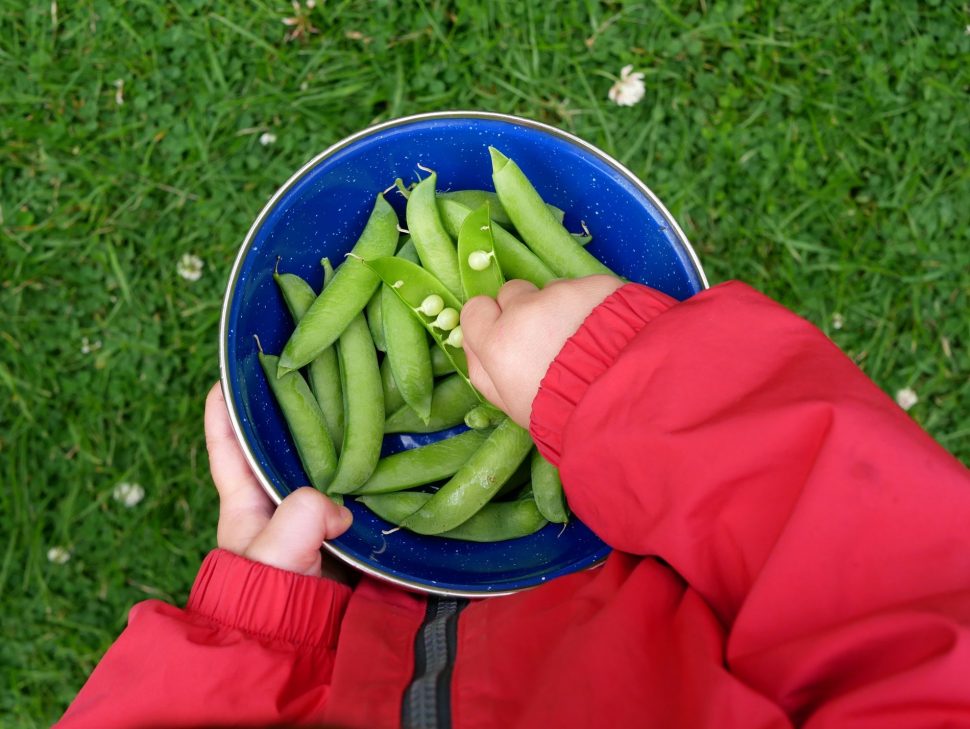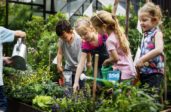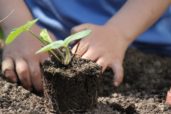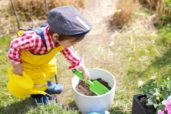Legumes in children’s food

Legumes is a collective term for a group of plants and their fruits including peas, beans, lentils, chickpeas, soybeans, lupins. They are nutritionally high in protein, high in vitamin B, minerals, calcium, phosphorus and iron. They can cause flatulence, which is due to the short-chain carbohydrates that are digested by bacteria in the large intestine, as they are indigestible by the human digestive system. Legumes have a low glycemic index, they reduce blood sugar and, except of soy, they are low in fat. Legumes, with the exception of fresh peas, should not be eaten raw.
Offering legumes to children is not an easy task – most school cooks will tell you that pea porridge or lentils often end up in the trash. There are usually two factors behind this – either children are not used to legumes from home, or they may be improperly prepared. In general, children do not like to eat something they do not know. So if you don’t prepare legumes at home, you can’t want children to love them. Parents are simply leading by example. At the same time, if children are not used to consuming legumes, they may be less digestible for them.
You can see how we include legumes in the diet in our kindergarten and what the whole menu looks like HERE. We update the menus every week.
If you want to include legumes in your meal, you can either admit them or mix them into your meal. Some types of legumes are attractive to children, some you have to help a little or mix with something and you can hide some completely. You may be surprised at how legumes can taste. You can make them not only classically, but you can also enjoy them in cakes, biscuits, desserts, spreads, sauces, soups or salads.
So how to serve children?
- The visual side is important for children, do not be afraid to include colors: mottled beans, red lentils, yellow and green peas… Top up legumes with colorful vegetables.
- You can improve the look with different shapes: balls, pancakes, burgers, dips, spreads, etc.
- Lead by example and include legumes in your home diet on a regular basis. For start, combine them with the favorite dishes.
- Experiment and use them in soups, main courses and salads, learn how to prepare spreads, meatballs or sweet dishes from legumes.
- Do not give up after the first failure. It is said that we have to get used to food, so we like it until the sixth, and children even on the tenth, try.
Bean brownies with raspberries – not only good, but also healthy
The beans take away the calories of the dessert and increase the fiber and protein content, leaving the dessert smooth.
We need: 300 g of pre-cooked red or black beans (if you use canned beans, wash in clean water), 20 g of cocoa, 60 g of oatmeal, a pinch of salt, 130 g of honey, 1 teaspoon of vanilla extract, 1 teaspoon of baking powder, 200 ml of semi-skimmed milk, 80 g of coarsely chopped chocolate, a handful of fresh raspberries (you can also use strawberries or bananas)
Preheat the oven to 180 ° C. Mix all ingredients except chocolate and fruit in a blender until smooth. Add pieces of chocolate and mix.
Pour the dough into a small mold (20×20 cm) lined with baking paper and spread. Sprinkle the dough with fruit. Bake in a preheated oven for about 25-30 minutes. You can tell if the dessert is ready with a skewer. After removing from the oven, let the brownies cool down and put them in the fridge for at least an hour before serving.
Fine chickpea spread suitable for children
We need: 100g of boiled chickpeas (we use canned), 100g Lučina cheese, 4 larger radishes (we can use about 10 cm piece of finely chopped cucumber salad, but pour out excess water), chickpea infusion, a pinch of salt
Put chickpeas, Lučina and a little chickpea infusion in the container so that the mass mixes well. We mix the with a stick mixer until smooth. Finely grate the radishes into the spread, add salt and mix. Garnish with cucumber, radish, pepper or other vegetables.
Simple vegetable-lentil soup
The red lens is peeled, so it does not contain flatulent substances. Its advantage is that it does not have to be soaked and cooked for a long time, like other legumes.
We need: 2 small handfuls of red lentils, 2 large handfuls of diced potatoes, half an onion, half a handful of grated carrots, one tablespoon of grated celery, crushed cumin, ¾ l vegetable broth, a tablespoon of olive oil or butter
Very finely chopped onion, root vegetables and potatoes are stewed in olive oil, drizzled with water, add a little bit of cumin. When the potatoes have softened, pour the broth over the vegetables and add the lentils. We cook everything until the lens softens. We can decorate the soup with a spoonful of sour cream.
Fun pea cultivation
We need: pea seeds, water, later a flowerpot (box) with clay
Peas are best for children to plant – they are large and grow quickly. We place pea seeds on the soil surface together with children at a distance of 3-5 cm. Cover the laid seeds with a layer of additional soil and sprinkle with water. You can create a simple construction for peas (bamboo sticks are enough), along which they will crawl. After planting, the soil must be watered regularly. A small watering can will also serve this purpose for children. In a few weeks, the peas will germinate and the plants will begin to wrap around the prepared structure. Children can observe flowering, and then the formation of pods, in which they eventually find sweet pea balls. You have just aroused interest in legumes in your children…


